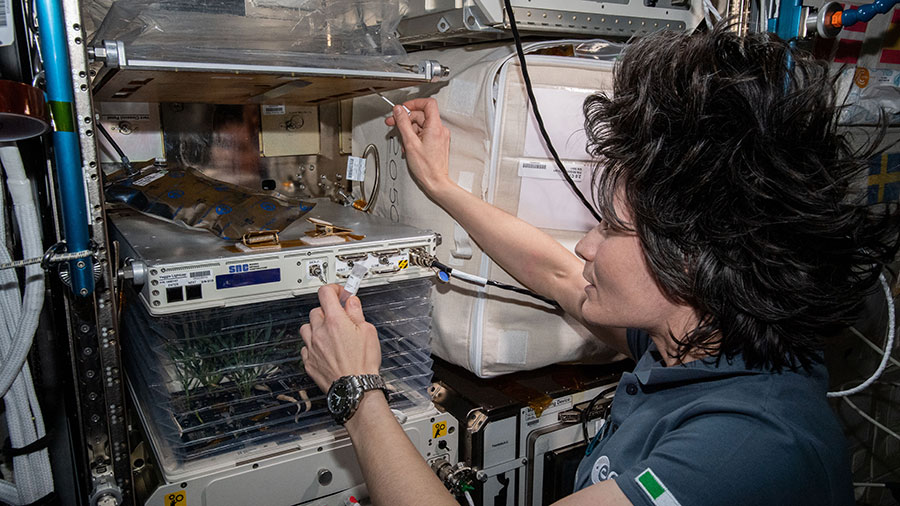Central Nervous System, Space Physics Studies Benefit Astronauts and Earthlings

The Expedition 67 crew members kept up their studies today exploring how the human body adapts to weightlessness and ways that space physics can benefit humans on Earth. Europe’s robotic arm is also being tested for its performance on the International Space Station’s Russian segment.
NASA astronauts Bob Hines and Jessica Watkins partnered together again on Wednesday morning continuing to study how the central nervous system adapts to weightlessness. The duo took turns inside the Columbus laboratory module wearing virtual reality goggles while in a free-flying position for the GRASP experiment sponsored by ESA (European Space Agency). The investigation explores how sight and sound affects the eye-hand/reach-to-grasp coordination without the traditional up and down reference humans are familiar with in Earth’s gravity.
Fluids physics research on the station has a variety of applications that could inform innovations in the pharmaceutical and commercial industries. ESA Flight Engineer Samantha Cristoforetti continued observing emulsion samples in the KERMIT microscope. Results from the Foam and Emulsions study could expand space research opportunities and improve the development of consumer and industrial products. Watkins spent an hour on the Ring Sheared Drop experiment that uses surface tension to contain fluids and observe the formation of destructive protein clusters responsible for neurodegenerative diseases such as Alzheimer’s. Observations may contribute to advanced therapies improving health for both astronauts and Earthlings.
Cristoforetti also joined NASA Flight Engineer Kjell Lindgren in the afternoon for eye checks using a medical imaging device to measure intraocular pressure, or fluid pressure in the eye. Lindgren would work throughout Wednesday checking components on an incubator, collecting and analyzing water samples, then working on orbital plumbing tasks.
The European robotic arm (ERA) continued going through check outs and verifications before it begins payload operations on the orbiting lab’s Russian segment. Roscosmos Flight Engineer Sergey Korsakov worked throughout Wednesday monitoring the ERA’s telemetry and observing its performance while being maneuvered on the Nauka multipurpose laboratory module.
Station Commander Oleg Artemyev and Flight Engineer Denis Matveev partnered together again for an exercise study to improve workouts in microgravity. The duo later wrapped up the day preparing for their upcoming return to Earth with Korsakov in the Soyuz MS-21 crew ship planned for the end of September.
Learn more about station activities by following the space station blog, @space_station and @ISS_Research on Twitter, as well as the ISS Facebook and ISS Instagram accounts.
Get weekly video highlights at: http://jscfeatures.jsc.nasa.gov/videoupdate/
Get the latest from NASA delivered every week. Subscribe here: www.nasa.gov/subscribe
from Space Station https://ift.tt/1N5uy7L
Comments
Post a Comment